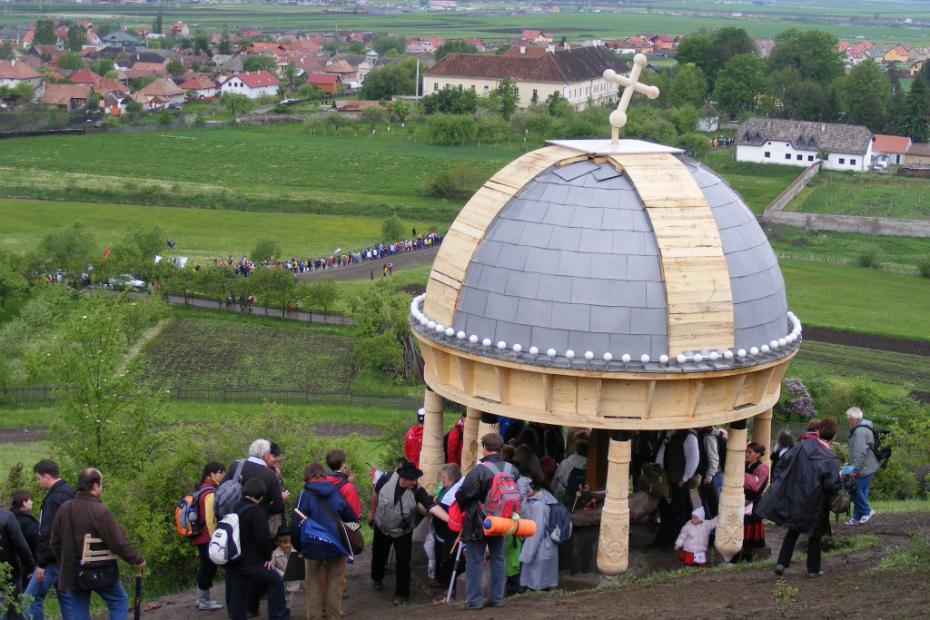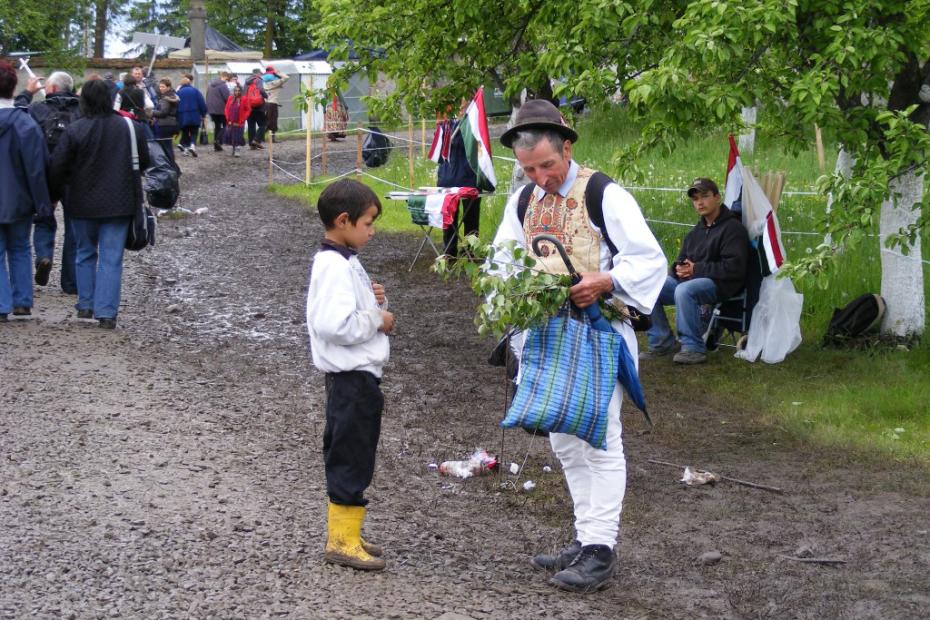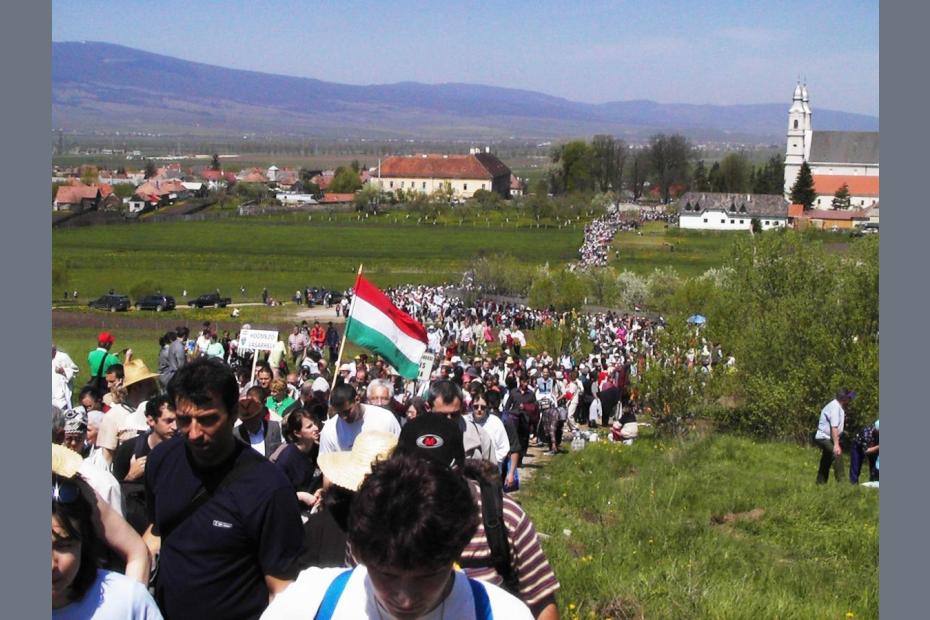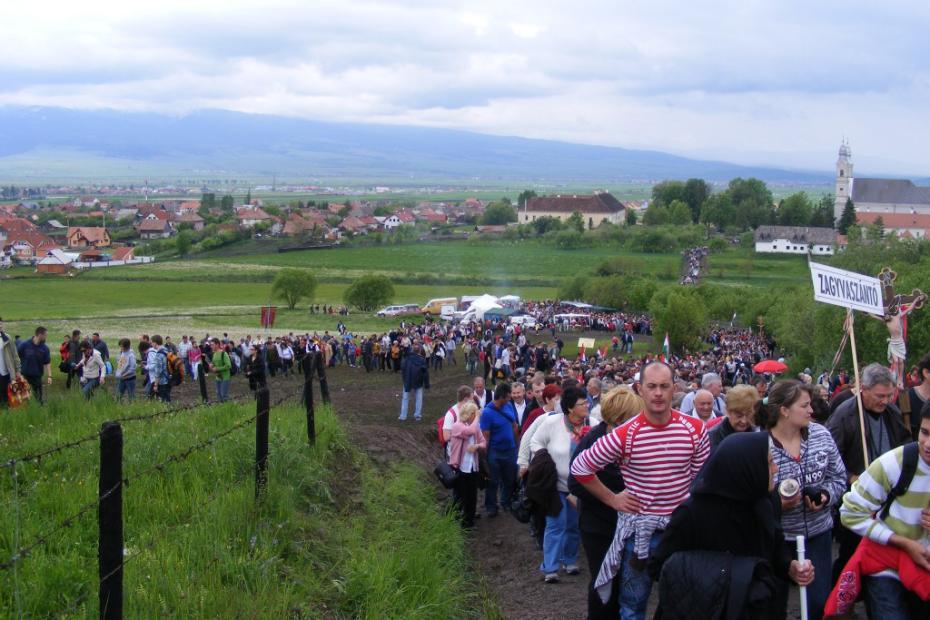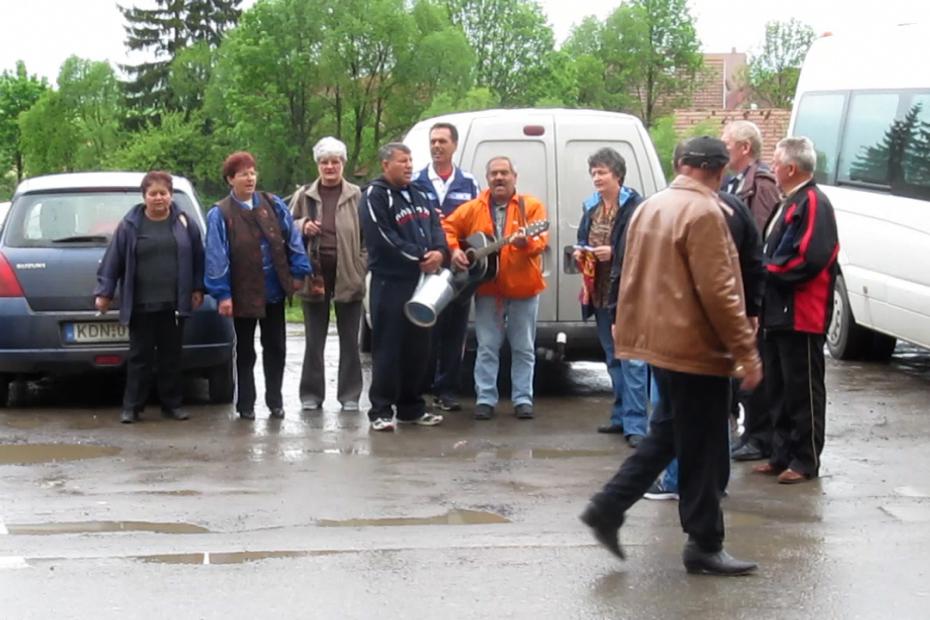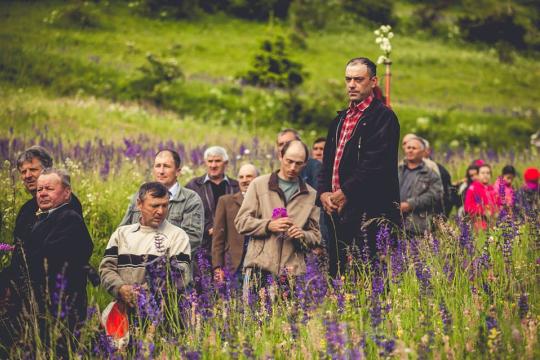An annual Whitsunday pilgrimage gathering in the village called, in Romanian, Şumuleu Ciuc and Csíksomlyó in Hungarian attracts between 50,000 and 100,000 attendees each year. Whitsunday is the Anglican name often used for the Christian festival of Pentecost, the seventh Sunday after Easter, which commemorates the descent of the Holy Spirit upon Christ's disciples. The event takes place near a friary and church belonging to the Transylvanian Order of Franciscans, who have maintained a presence in Transylvanian since the 15th century and are now growing in numbers after the fall of socialism in Romania. The Romanian socialist government allowed Transylvanian Franciscan friars to serve at Csíksomlyó throughout the socialist period, even though the Order was not allowed to accept new members during this time. The socialist government also discouraged large groups from attending the pilgrimage beginning in 1949. Despite this policy, many older locals who attend the event today will eagerly share their memories of visiting Csíksomlyó in secret over Pentecost weekend. A visit to a pilgrim’s home will include a trip to their bookshelf to give you an immensely popular book, The Secret of Csíksomlyó, written by a Franciscan friar and priest who served at Csíksomlyó from 1957-1970, Fr. Daczó Lukács Árpád (OFM).
Today, the pilgrimage is hardly a secret. It is one of the largest annual gatherings of any kind in Romania. Both Romanian-language and Hungarian-language media cover the event extensively, and a visitor to the pilgrimage site during the Pentecost event is likely to see groups of pilgrims stopping to give interviews in front of video cameras and inside the local branch of the World Family of Radio Maria media network. The event is especially popular among participants in the Catholic Charismatic Renewal, who are attracted by this opportunity to publicly share their enthusiastic and emotional style of worship to Catholics who might not have been exposed to the Charismatic Renewal before.
Village-based groups called, in Hungarian, keresztalja process to Csíksomlyó from villages all around the pilgrimage site carrying banners with images of their village’s patron saint. Some of these groups travel several days, sleeping outside or in locals’ homes, to arrive by noon for the Whitsunday Mass held in a natural amphitheater near the Franciscan friary. The procession groups are joined by others who begin singing songs of praise to the Virgin Mary as soon as they disembark from arriving trains and buses at the nearest major city, Miercurea Ciuc. From there, pilgrims form a long line that slowly streams up to the amphitheater. Billowing clouds of fragrant smoke rise above the line of pilgrims as they pass between vendors selling grilled meats and a special cake roasted over red-hot coals called, in Hungarian, kürtőskalács. The keresztalja groups will often pause before the doors of the Franciscan friary and lower their village banners three times before continuing up to the amphitheater. This gesture honors a statue of the Virgin Mary inside the church, who gives the pilgrimage site its official name: Our Lady of Csíksomlyó. Although pilgrims don’t have time to stop for more than a brief moment if they want to get to the Mass on time, the keresztalja groups will often carry their banners into the church and process with them directly to the statue.
After the Mass, pilgrims will visit local friends, stop for refreshments, or begin the journey home. A large number of visitors, though, will remain at Csíksomlyó for an all-night vigil that takes place in the Franciscan church. During the vigil, women lead groups in praying the Rosary and singing songs of praise to the Virgin Mary. Others will wait in line to present objects to the Virgin Mary for her blessing, taking advantage of the fact that the line is much shorter at this time than after the Whitsunday Mass. The vigil lasts until daybreak, when many pilgrims will return to the amphitheater to watch the sun rise. Some keresztalja village groups will gather together once more in front of the Csíksomlyó church Sunday morning before starting the trip back home, where they are often met by a crowd of locals waiting with flags of their own as well as refreshments.
